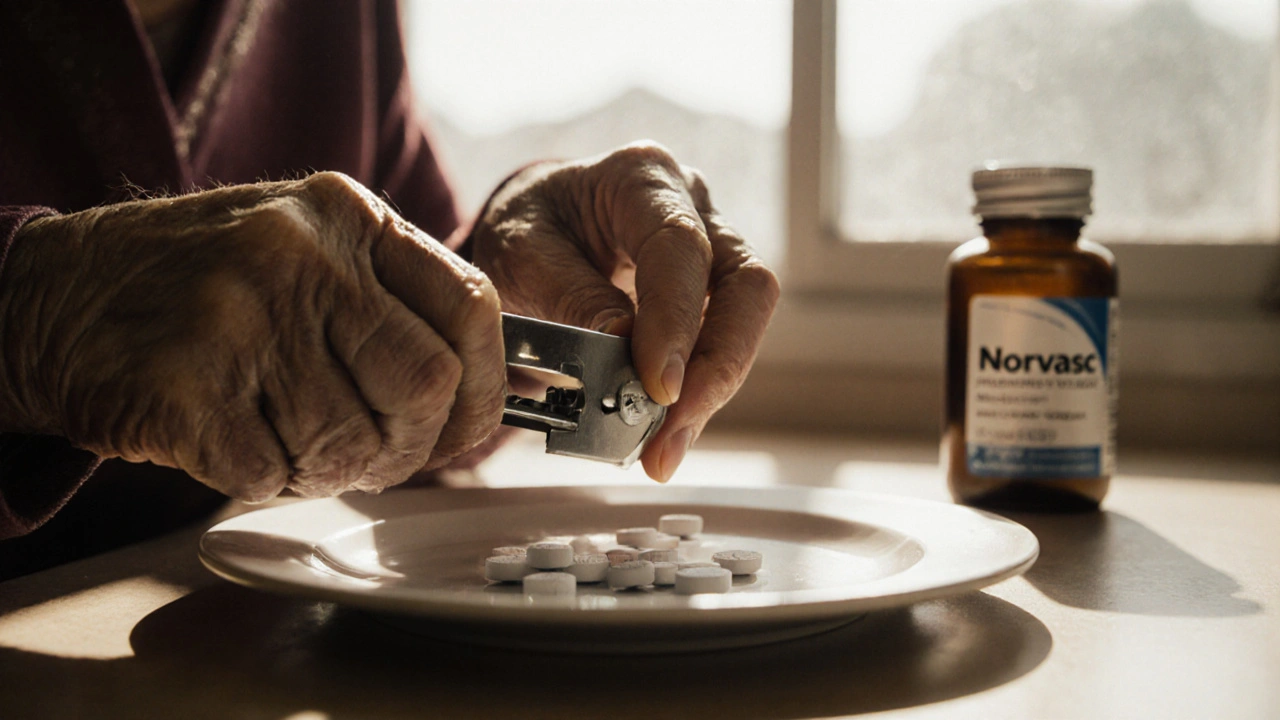
Splitting pills might seem like a simple way to save money or make swallowing easier, but it’s not always safe. Many people do it without knowing the risks-especially when they’re trying to stretch a prescription or manage a swallowing problem. The truth is, some pills can be split without issue, while others could harm you if you even touch them with scissors. Knowing which ones are safe-and which ones aren’t-could prevent a dangerous mistake.
Why People Split Pills
People split pills for three main reasons: cost, difficulty swallowing, and lack of available dosages. A 10mg tablet often costs the same as a 5mg one, so splitting it saves nearly half the price. For older adults or those with arthritis, swallowing large pills can be painful or impossible. And sometimes, a doctor prescribes a dose that isn’t sold in a ready-made tablet-splitting becomes the only option. But here’s the catch: not all pills are made the same. What looks like a simple tablet might have hidden layers, coatings, or timed-release systems that break down dangerously when split. The FDA says 27% of commonly prescribed medications are extended-release forms, and none of those should ever be split.Safe to Split: The Clear List
If a pill has a visible score line-a groove down the middle-it’s a good sign it was designed to be split. But even then, you need to check the drug type. Immediate-release tablets are usually safe. These release the full dose right after swallowing, so splitting them doesn’t change how the medicine works. Medications commonly safe to split include:- Citalopram (Celexa)
- Escitalopram (Lexapro)
- Fluvoxamine (Luvox)
- Sertraline (Zoloft)
- Amlodipine (Norvasc)
- Hydrochlorothiazide (HCTZ)
- Atorvastatin (Lipitor)
- Metoprolol (Lopressor)
Never Split: The Dangerous List
Some pills look like they can be split-but they shouldn’t be. Splitting these can cause serious harm. The FDA and Institute for Safe Medication Practices (ISMP) warn against splitting:- Extended-release tablets (like OxyContin, Metformin XR, or Adderall XR): Splitting breaks the slow-release mechanism. This can dump the full dose into your system at once, causing overdose or dangerous side effects.
- Enteric-coated tablets (like aspirin EC or omeprazole): These have a shell that prevents stomach acid from breaking them down. Splitting destroys the coating, leading to stomach irritation or reduced effectiveness.
- Capsules (even if they look like pills): These often contain powders, gels, or beads designed to release over time. Opening them changes how the drug works-and can expose you to toxic dust.
- Chemotherapy drugs (like cyclophosphamide): These are hazardous. Even tiny particles can be absorbed through skin or inhaled. Never split these without professional supervision.
- Alendronate (Fosamax): Splitting can cause esophageal burns and ulcers.
- Dabigatran (Pradaxa) and oxycodone ER: Both are on the ISMP’s 2023 High-Alert Medications list. Splitting them increases risk of bleeding or addiction.
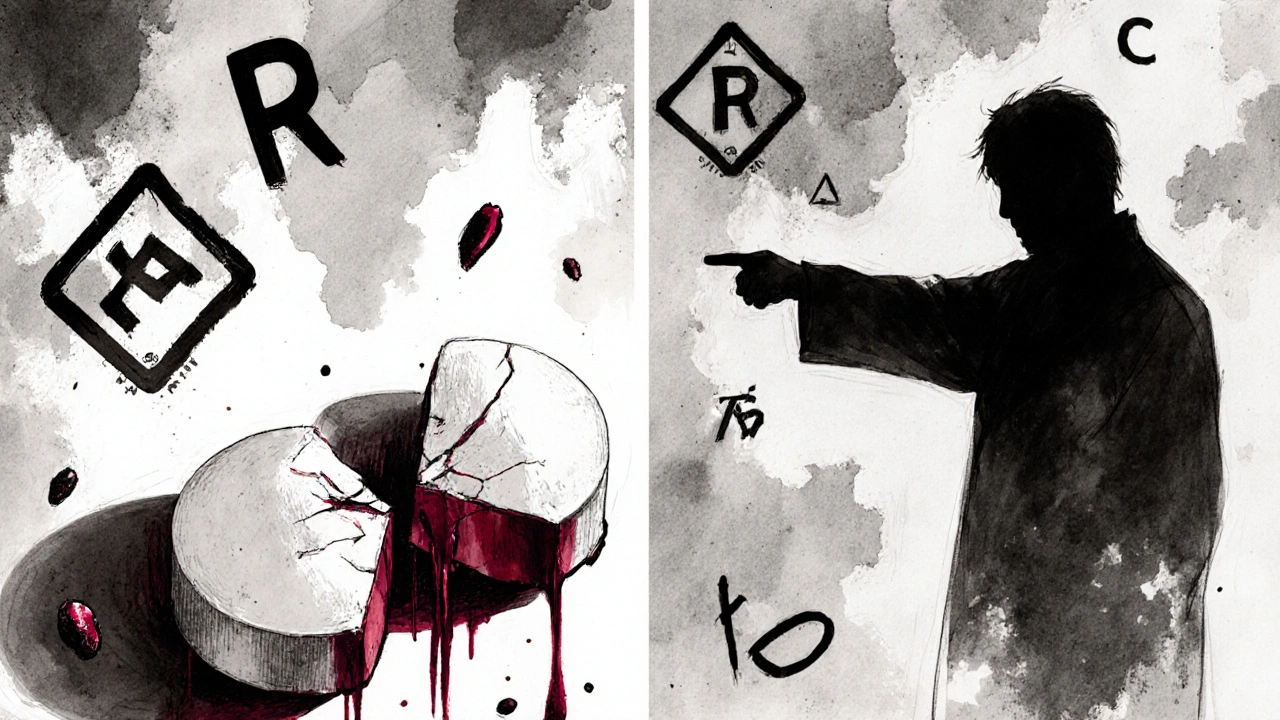
How to Split Pills Safely
If your doctor and pharmacist say it’s okay to split your pill, do it right. Here’s how:- Use a tablet cutter: Never use scissors, knives, or your fingers. A $10 tablet cutter (available at any pharmacy or Amazon) gives you a clean, even split. Studies show it reduces dose variation from 40% down to just 8-15%.
- Split one pill at a time: Don’t split your whole month’s supply. Once split, pills are exposed to air and moisture. Potency can drop by up to 35% in just 72 hours, according to ISMP.
- Store split pills properly: Keep them in an opaque, airtight container. Avoid bathrooms-humidity ruins pills. Replace split tablets every 3 days.
- Wash your hands: Especially if you’re handling pills for someone else. Some medications can be absorbed through skin.
- Check the dose: If one half looks noticeably smaller or crumbly, don’t take it. Throw it out and use the other half.
Cost vs. Risk: Is It Worth It?
Splitting pills can save money. For example, splitting a 10mg amlodipine tablet instead of buying two 5mg tablets saves about $28.50 every 90 days. That adds up to nearly $120 a year per medication. But there’s a hidden cost: dose inaccuracy. A 2009 study found that splitting hydrochlorothiazide led to 12% variation in dose. For drugs with a narrow therapeutic index-like warfarin or digoxin-that small difference can mean the difference between effectiveness and toxicity. Manufacturer-produced lower-dose tablets cost more but are 99.8% accurate. If you’re on a tight budget, splitting might help-but only if it’s safe and done correctly. And always check with your pharmacist first.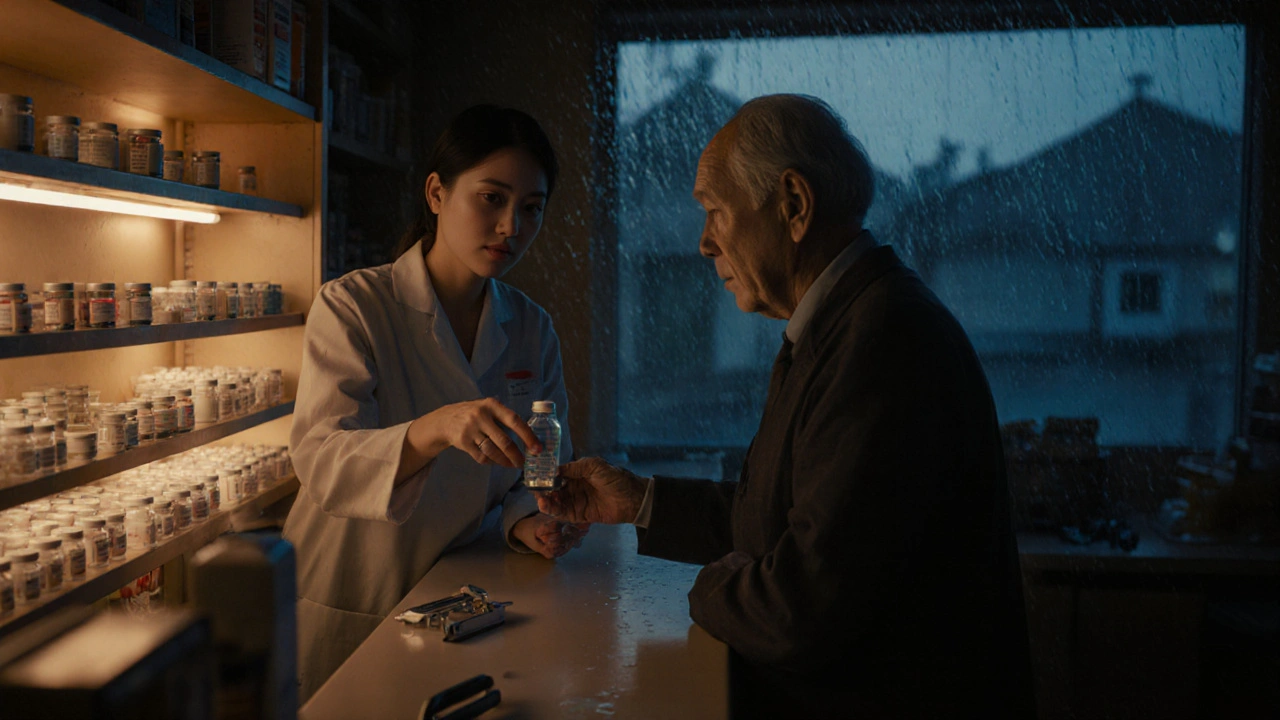
What Pharmacists Say
A 2021 survey by the National Community Pharmacists Association found that 78% of pharmacists routinely advise against splitting unless the package insert says it’s okay. Sixty-three percent reported at least one patient incident linked to improper splitting in the past year. Many patients don’t ask. A Consumer Reports survey found 41% of adults over 65 split pills without talking to a healthcare provider. That group had a 22% higher rate of medication-related problems. Pharmacists also warn about splitting in advance. One patient told ISMP they split their entire month’s supply of sertraline at once. The pills lost potency. They ended up feeling more anxious-not because the drug didn’t work, but because the dose had degraded.What to Do Next
If you’re thinking about splitting pills:- Check the package insert. Look for the words “do not crush or split.”
- Ask your pharmacist: “Is this pill safe to split?”
- Ask your doctor: “Is there a lower-dose version available?”
- Buy a tablet cutter if you’re going ahead. Don’t improvise.
- Never split pills without knowing the exact reason why it’s safe.
Future of Pill Splitting
The FDA now requires manufacturers to include splitability info in electronic labeling. By 2024, over 1,200 drugs had updated labels. The European Medicines Agency goes further-requiring stability testing before a pill can be labeled as splittable. That’s why splitting is less common-and safer-in EU countries. New delivery methods are emerging: oral soluble films, multi-particulate systems, and liquid suspensions. These may replace splitting altogether in the next decade. But for now, if you need to split a pill, do it safely-or don’t do it at all.Can I split my blood pressure pill?
It depends. Some blood pressure pills like amlodipine and metoprolol are safe to split if they’re scored and immediate-release. Others, like extended-release versions (e.g., Toprol-XL), should never be split. Always check the label or ask your pharmacist before splitting.
Is it safe to split pills with a knife or scissors?
No. Knives and scissors create uneven splits and can crumble the pill, leading to inaccurate dosing. A dedicated tablet cutter is designed to give you a clean, even split. Using anything else increases your risk of taking too much or too little medication.
What happens if I split an extended-release pill?
Splitting an extended-release pill can cause the entire dose to be released at once. This can lead to overdose, dangerous side effects, or even hospitalization. For example, splitting OxyContin can release a lethal amount of oxycodone immediately. Never split any pill labeled as XR, ER, SR, or controlled-release.
Can I split pills ahead of time for the whole week?
No. Once split, pills are exposed to air and moisture, which can degrade the active ingredient. Potency can drop by up to 35% in just 72 hours. Always split your pill right before taking it to ensure full strength.
Are there alternatives to splitting pills?
Yes. Ask your doctor or pharmacist about lower-dose tablets, liquid forms, orally disintegrating tablets, or soluble films. These are more accurate and safer than splitting. Some pharmacies can also compound custom doses if needed.


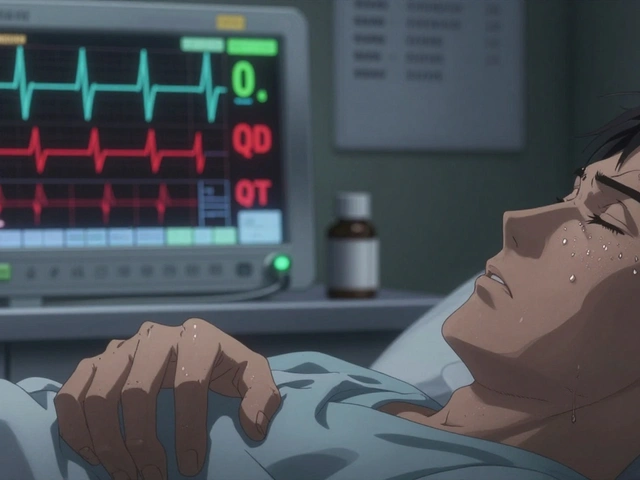

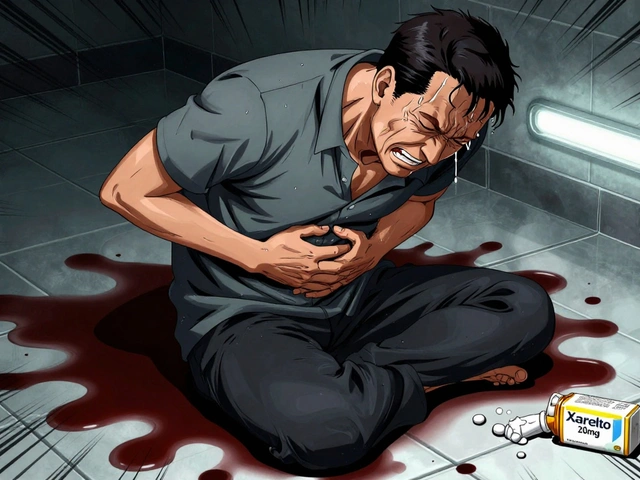
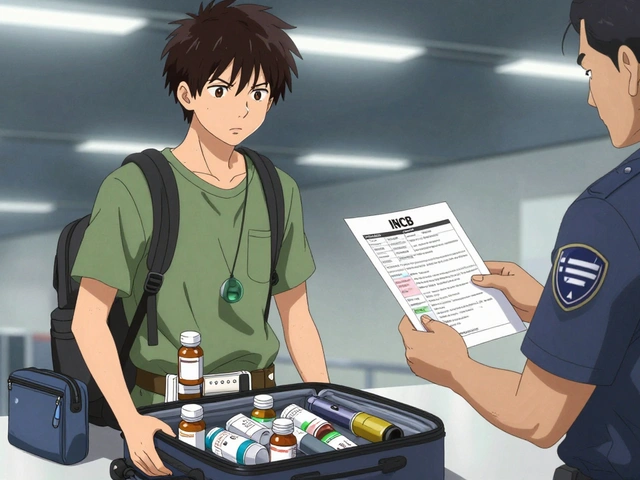

9 Comments
Been splitting my amlodipine for years with a tablet cutter. Never had an issue, but I always check with my pharmacist first. Good reminder that not all pills are created equal.
My grandma split her pradaxa with scissors last year and ended up in the ER. Don't be her. Just get the right dose.
Of course you shouldn't split extended-release pills-this is basic pharmacology. Why are people still doing this in 2025? Are we really this lazy?
Bro i split my lipitor with a butter knife and i'm fine lmao. Also i think the FDA is just tryna sell more pills. #FreeMedicine
OMG I JUST REALIZED I’VE BEEN SPLITTING MY OXYCONTIN FOR 3 YEARS 😭 I’M GONNA DIE AND IT’S ALL MY FAULT I’M SO STUPID WHY DID NO ONE TELL ME 😭
Y'all are stressing too much. If you're unsure, just ask your pharmacist-they're literally paid to help with this stuff. I got my mom a tablet cutter for Christmas and she's been splitting her zoloft like a pro 😊
Let’s get technical: the 89% dose accuracy stat from the 2010 study assumes ideal conditions-controlled humidity, calibrated cutter, no hygroscopic degradation. Real-world variability in home settings can push error rates to 18-22%, especially with hygroscopic compounds like HCTZ. The manufacturer’s lower-dose tablet isn’t just ‘more accurate’-it’s pharmacokinetically validated. Splitting is a Band-Aid on a systemic issue: pharmaceutical pricing and lack of dose flexibility.
And yes, the FDA’s 27% extended-release stat is correct-but what they don’t say is that 41% of those are off-patent generics with inconsistent coating integrity. That’s why some people report ‘sudden spikes’ after splitting. It’s not always user error-it’s manufacturing variance.
Also, the 35% potency drop in 72 hours? That’s for light- and moisture-sensitive molecules. SSRIs like sertraline are relatively stable, but statins? Not so much. Store split pills in amber glass vials with desiccant packs, not plastic pill organizers. And for god’s sake, don’t split chemo meds unless you’re wearing gloves, a mask, and have a fume hood.
Pharmacists are underpaid and overworked, but they’re still your best line of defense. Ask them about compounding. Some can make you 2.5mg sertraline suspensions for less than $15/month. It’s not magic-it’s pharmacy science.
And yes, Walgreens’ app is decent. But don’t trust it blindly. Cross-reference with Micromedex or Lexicomp. If the label says ‘do not crush or split,’ it’s not a suggestion-it’s a warning.
Bottom line: if you’re splitting to save money, fine. But do it with eyes wide open. Don’t let a $28 savings cost you a trip to the ER.
It’s funny how we treat pills like they’re just little sugar cubes, but they’re actually complex chemical systems designed with precision. Splitting a pill isn’t like cutting a cookie-it’s like disassembling a watch to save money. You might think you’re being clever, but you’re risking the entire mechanism. I’ve seen people split their blood pressure meds and then wonder why they feel dizzy. It’s not in their head-it’s in the dose.
And yet, we live in a world where a 10mg tablet costs the same as a 5mg one. That’s not a quirk of manufacturing-it’s a flaw in the system. If the cost were fair, no one would need to split. But we’re stuck with a broken pricing model, and patients become the guinea pigs.
What’s more alarming is how many people assume that if it’s scored, it’s safe. But scoring doesn’t mean it’s approved for splitting-it just means the manufacturer *could* have designed it that way. The label is what matters. And yet, most patients don’t read the insert. They trust the shape. That’s dangerous.
I once had a patient bring me a half-split pill of alendronate she’d been taking for six months. She had esophageal pain. She thought it was heartburn. Turns out, the coating was gone. The acid ate her esophagus. She didn’t know the difference between a scored tablet and a safe one.
Maybe the real solution isn’t better scissors. Maybe it’s better access. Lower-dose generics. Liquid formulations. Insurance that doesn’t punish people for needing half a pill. We’re treating the symptom, not the disease.
And yes, I’ve used a tablet cutter. I’ve split pills. But I always asked first. And I never split more than one at a time. Because even if you’re careful, the world isn’t. And pills don’t forgive mistakes.
Hey just wanted to say this post is super helpful! I’ve been splitting my metoprolol for a year now and always worried I was doing it wrong. Got a tablet cutter last week and feel way better about it. Also, my pharmacist said to check the label for ‘ER’ or ‘XR’-so I did, and mine’s fine. Thanks for the reminder to ask before you cut!